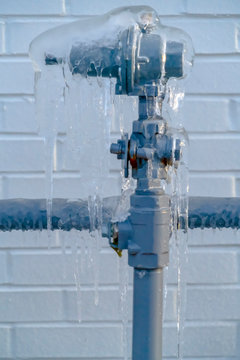Advice for Preventing Frozen Pipes in Cold Weather: Specialist Insights
Advice for Preventing Frozen Pipes in Cold Weather: Specialist Insights
Blog Article
What are your beliefs on Preventing and dealing with frozen pipes?

Cold weather can ruin your pipes, specifically by freezing pipes. Here's just how to stop it from taking place and what to do if it does.
Introduction
As temperature levels decrease, the threat of icy pipelines boosts, potentially causing pricey repair work and water damage. Understanding how to stop frozen pipelines is vital for house owners in cool environments.
Understanding Frozen Pipelines
What causes pipes to freeze?
Pipelines ice up when subjected to temperature levels listed below 32 ° F (0 ° C) for expanded durations. As water inside the pipelines ices up, it increases, putting pressure on the pipe wall surfaces and possibly causing them to burst.
Risks and damages
Frozen pipes can bring about supply of water interruptions, residential or commercial property damages, and pricey repair work. Ruptured pipelines can flood homes and create considerable architectural damages.
Indications of Frozen Pipes
Recognizing frozen pipelines early can stop them from bursting.
Just how to determine frozen pipelines
Look for lowered water flow from taps, unusual smells or sounds from pipes, and visible frost on revealed pipes.
Avoidance Tips
Insulating vulnerable pipes
Wrap pipelines in insulation sleeves or make use of warm tape to safeguard them from freezing temperatures. Concentrate on pipelines in unheated or external locations of the home.
Heating strategies
Keep indoor rooms properly heated, especially locations with plumbing. Open closet doors to permit warm air to circulate around pipelines under sinks.
Safeguarding Outside Pipes
Garden pipes and outdoor faucets
Separate and drain garden tubes prior to winter months. Mount frost-proof spigots or cover exterior faucets with shielded caps.
What to Do If Your Pipelines Freeze
Immediate activities to take
If you think icy pipelines, keep taps available to eliminate stress as the ice melts. Utilize a hairdryer or towels soaked in hot water to thaw pipelines gradually.
Long-Term Solutions
Architectural changes
Take into consideration rerouting pipelines far from outside wall surfaces or unheated areas. Include extra insulation to attic rooms, basements, and crawl spaces.
Updating insulation
Purchase high-quality insulation for pipelines, attics, and walls. Correct insulation helps keep regular temperatures and lowers the threat of frozen pipes.
Conclusion
Stopping frozen pipelines needs positive measures and fast actions. By understanding the causes, indications, and safety nets, property owners can protect their plumbing throughout winter.
5 Ways to Prevent Frozen Pipes
Drain Outdoor Faucets and Disconnect Hoses
First, close the shut-off valve that controls the flow of water in the pipe to your outdoor faucet. Then, head outside to disconnect and drain your hose and open the outdoor faucet to allow the water to completely drain out of the line. Turn off the faucet when done. Finally, head back to the shut-off valve and drain the remaining water inside the pipe into a bucket or container. Additionally, if you have a home irrigation system, you should consider hiring an expert to clear the system of water each year.
Insulate Pipes
One of the best and most cost-effective methods for preventing frozen water pipes is to wrap your pipes with insulation. This is especially important for areas in your home that aren’t exposed to heat, such as an attic. We suggest using foam sleeves, which can typically be found at your local hardware store.
Keep Heat Running at 65
Your pipes are located inside your walls, and the temperature there is much colder than the rest of the house. To prevent your pipes from freezing, The Insurance Information Institute suggests that you keep your home heated to at least 65 degrees, even when traveling. You may want to invest in smart devices that can keep an eye on the temperature in your home while you’re away.
Leave Water Dripping
Moving water — even a small trickle — can prevent ice from forming inside your pipes. When freezing temps are imminent, start a drip of water from all faucets that serve exposed pipes. Leaving a few faucets running will also help relieve pressure inside the pipes and help prevent a rupture if the water inside freezes.
Open Cupboard Doors
Warm your kitchen and bathroom pipes by opening cupboards and vanities. You should also leave your interior doors ajar to help warm air circulate evenly throughout your home.

I came across that content about How To Avoid Freezing Pipes when looking around the search engines. Sharing is nice. Helping others is fun. Thanks a lot for going through it.
Visit Our Site Report this page